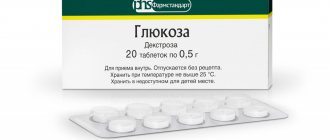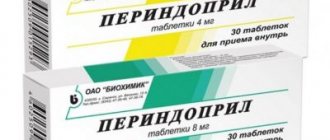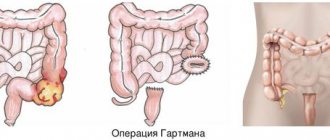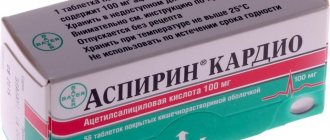Antidiabetic drugs are medications that lower blood glucose levels and are used to treat type 1 or type 2 diabetes.
Diabetes mellitus is a disease caused by insufficient production of insulin in the pancreas or a decrease in its function. The main symptoms of diabetes mellitus include hyperglycemia (increased blood glucose levels), glucosuria (the appearance of glucose in the urine), polyuria (increased diuresis), polydipsia (increased thirst), ketoacidosis (the appearance of toxic ketone bodies in the blood).
Insulin deficiency can be absolute or relative.
Absolute insulin deficiency develops as a result of the death of β-cells of the pancreatic islets that produce insulin. In this case, we talk about type 1 diabetes mellitus (insulin-dependent diabetes).
Type 1 diabetes mellitus usually occurs at a young age in genetically predisposed people under the influence of viruses, toxins, stress, etc. Such diabetes requires constant treatment with insulin preparations.
With a relative deficiency of insulin itself, a sufficient amount is produced, peripheral tissues are practically insensitive to it. This characterizes non-insulin-dependent diabetes or type 2 diabetes. A powerful provoking factor in the development of type 2 diabetes mellitus is obesity. The use of insulin preparations has virtually no therapeutic effect. In this case, synthetic antidiabetic agents are used.
Glucose is the main source of energy for humans. It enters the body with food as part of complex carbohydrates - polysaccharides (starch, glycogen) and disaccharides (sucrose, lactose), which, when broken down in the digestive tract, form glucose. From the small intestine, glucose is absorbed into the blood with the help of special transport proteins and distributed throughout the body.
Glucose, however, does not stay in the blood for long, quickly penetrating into the cells of the brain, muscles, liver, etc., where it is included in the biochemical processes that lead to the formation of the energy the cells need. The transport of glucose from the blood into the cells of the body's tissues is also carried out with the help of special transporter proteins, which are activated by the hormone insulin in the β-cells of the pancreatic islets.
If the pancreas produces little insulin or it is inactive against transporters, glucose cannot enter the cells, accumulating in the blood (hyperglycemia). In this case, the cell itself suffers, which, not receiving the necessary source of energy, is forced to look for other sources of energy, for example, fatty acids. However, the conversion of fatty acids occurs with the formation of toxic intermediate products - ketone bodies, which are released into the blood (ketonemia).
In the blood, ketone bodies cause damage to the walls of blood vessels and blood cells - red blood cells, platelets. Once in the brain, ketone bodies depress consciousness, impair breathing, and in large doses even cause coma.
Blood glucose, in turn, is also not a safe substance. Without getting into the cell, where it is instantly converted into energy or stored in reserve, glucose begins to oxidize blood proteins (albumin, hemoglobin) and surface proteins of the membranes of the cells of the vascular wall. This also leads to vascular damage and poor circulation.
The most sensitive to the negative effects of hyperglycemia and ketonemia are small-caliber vessels - retinal vessels, capillaries of the glomeruli of the kidneys, capillaries of the foot.
pharmachologic effect
Insulin drugs lower blood glucose levels by increasing its utilization by peripheral tissues.
In addition, insulins have an anabolic effect - they increase protein synthesis and stimulate muscle growth.
Synthetic antidiabetic drugs reduce blood glucose levels by increasing the secretion of intrinsic insulin (sulfonylurea derivatives, meglitinides, dipeptidyl peptidase-4 inhibitors, glucagon-like peptide type 1 analogues); increasing the sensitivity of peripheral tissues to insulin (biguanides, thiazolidinediones); reducing glucose absorption in the intestine (α-glucosidase inhibitors, resins); increasing the excretion of glucose in the urine (sodium-glucose cotransporter type 2 inhibitors).
Change and intensification of therapy
At the first or subsequent visits, the patient should be warned about the possible need to intensify therapy:
“Over time, the disease usually progresses and the effect of the drug weakens. If one tablet drug is insufficiently effective, it may be necessary to increase the dose and/or add a second and sometimes a third drug. The time it takes for the effect of therapy to decrease is very individual. Insulin therapy may be required in the future to control blood sugar levels. It can be temporary (for example, during surgery) or prescribed permanently. If this happens, it will not be your fault.”
It may be noted that in some cases, oral therapy may be temporarily withheld when good control is achieved - most often when there is a significant decrease in body weight. But in most cases, they switch from taking one drug to taking another tablet drug (combination). When intensifying therapy, you can use a more convenient option of taking two drugs at once in one tablet (fixed combinations). The possibility of using fixed combinations is important for patients with T2DM, since the disease is often accompanied by concomitant pathology and, accordingly, the use of other drugs. The patient should be sufficiently aware of the benefits of fixed combinations, since this may increase his adherence to treatment. It is worth dwelling on the most common types of combination therapy:
- Metformin + PSM is a combination that allows you to increase insulin production and sensitivity to it in the body. Rapidly lowers blood sugar levels, but has disadvantages regarding the risk of hypoglycemia and weight gain;
- Metformin + DPP-4 inhibitors - a combination that allows you to increase insulin production through the glucose-dependent pathway and insulin sensitivity. Does not lead to the development of hypoglycemia and weight gain.
Classification of antidiabetic drugs
Insulin preparations are classified by origin into bovine (beef), pork and human insulin.
Bovine and porcine insulins are obtained from the pancreas of cattle and pigs, respectively.
Human (recombinant, genetically engineered) insulin is produced using biotechnology - the human insulin gene is introduced into the cell of baker's yeast or E. coli, which then begins to produce a hormone completely similar to human insulin.
In addition, insulin preparations are classified according to their duration of action:
- fast-acting insulin preparations (onset of action - 15-30 minutes, duration - 4-6 hours): insulin lispro, insulin aspart, insulin glulisine;
- medium-acting insulin preparations (onset of action – 1-1.5 hours, duration – 8-12 hours): human insulin, pork insulin;
- long-acting insulin preparations (onset of action – 4-8 hours min, duration – 20-30 hours): insulin glargine, insulin detemir, insulin degludec.
In addition, there are combination preparations of long-acting insulin with fast-acting insulin (insulin degludec + insulin aspart), as well as a combination of long-acting insulin with a glucagon-like peptide-1 agonist (insulin glargine + lixisenatide).
Synthetic antidiabetic drugs are classified according to their chemical structure, mechanism of action and origin:
- sulfonylurea derivatives: glibenclamide, gliclazide, glimepiride, gliquidone;
- biguanides: metformin;
- thiazolidinediones: pioglitazone, rosiglitazone;
- α-glucosidase inhibitors: acarbose, voglibose;
- dipeptidyl peptidase-4 inhibitors: sitagliptin, vildagliptin, saxagliptin, alogliptin, linagliptin, gemigliptin;
- glucagon-like peptide type 1 analogues: exenatide, liraglutide, lixisenatide, dulaglutide;
- sodium-glucose cotransporter type 2 inhibitors: dapagliflozin, canagliflozin, empagliflozin;
- meglitinides: nateglinide, repaglinide;
- aldose reductase inhibitors: isodibut;
- gums: guar gum;
- preparations of plant origin: blueberry shoots, bean fruit leaves.
In addition, in cases where one drug is not enough to achieve a pronounced hypoglycemic effect, effective combinations have been developed: biguanides + sulfonylurea derivatives; biguanides + dipeptidyl peptidase-4 inhibitors; thiazolidinediones + dipeptidyl peptidase-4 inhibitors; sodium-glucose cotransporter type 2 inhibitors + dipeptidyl peptidase-4 inhibitors; biguanides + sulfonylurea derivatives + thiazolidinediones.
Oral medications for type 2 diabetes
The list of hypoglycemic drugs is so impressive that even patients with diabetes sometimes have a very poor understanding of this variety of medications. Six pharmacological groups, which differ in their mechanism of action and have their own positive and negative sides, and dozens of drugs used for type 2 diabetes, create confusion in the minds of consumers. Let's try to put everything on the shelves.
Six groups
So, modern oral hypoglycemic agents belong to one of six groups:
- Biguanides are the main representative of metformin, which we have already written about.
- Sulfonylurea derivatives - glibenclamide, gliclazide, glimepiride, glipizide.
- Alpha-glucosidase inhibitors - acarbose, miglitol.
- Thiazolidinediones, or glitazones - pioglitazone, englitazone.
- DPP-4 inhibitors, or gliptins - sitagliptin, vildagliptin, saxagliptin.
- SGLT2 inhibitors - dapagliflozin, canagliflozin, empagliflozin.
Despite the names of pharmacological groups that are difficult for the inexperienced consumer to perceive, the mechanism of action of the drugs included in their composition is quite transparent, and the advantages and disadvantages are obvious. And, putting aside the fear of terms, let’s get to know them better.
Sulfonylurea derivatives
They “force” the body to produce (secrete) insulin, which is why they are sometimes called secretagogues.
How do they work?
Sulfonylurea derivatives bind to receptors located on the membranes of pancreatic beta cells. This triggers a sequence of events within the cells that results in an increase in the amount of insulin produced by the beta cells. Reduce the level of glycated hemoglobin (HbA1c - an indicator that reflects the level of glucose in the blood over a long period of time) by an average of 1-2%.
Who is it prescribed to?
Drugs in this group are prescribed for type 2 diabetes, when the level of glycated hemoglobin is above 6.5%. As a rule, they are approached in the absence or insufficient response to treatment with metformin.
Advantages:
- Affordable price.
- Fast onset of action.
- No effect on pressure levels.
- Convenient dosing.
- Reduction of microvascular complications (retinopathy, neuropathy).
Flaws:
- Risk of hypoglycemia.
- Gain in body weight.
- Low long-term effect.
Alpha-glucosidase inhibitors
Drugs in this group slow down the absorption of carbohydrates from food and the flow of glucose into the blood. Reduce HbA1c levels by 0.5–0.8%.
How do they work?
The mechanism of action is based on blocking intestinal enzymes - alpha-glucosidase - which are involved in the breakdown of saccharides.
Who is it prescribed to?
Drugs in this group are used when difficulties arise in controlling glucose levels after meals.
Advantages:
- The ability to reduce glucose levels after meals (postprandial), especially in combination with other glucose-lowering drugs.
- Low risk of hypoglycemia.
- No effect on body weight.
- Reduced triglyceride levels.
Flaws:
- Low hypoglycemic activity.
- Side effects from the gastrointestinal tract.
- Inconvenient dosing (need for frequent selection, dose titration).
- High price.
Thiazolidinediones
Drugs in this group increase the body's sensitivity to insulin, which is why they are sometimes called insulin sensitizers. HbA1c levels decrease by 0.5–1.4% when taking thiazolidinediones.
How do they work?
Thiazolidinediones bind to PPARg receptors, which are found in the liver, vascular endothelium, adipose and muscle tissues. This leads to an increase in the synthesis of proteins involved in glucose metabolism.
Who is it prescribed to?
Drugs in this group are used in cases where metformin or sulfonylurea derivatives are poorly tolerated or do not compensate for diabetes.
Advantages:
- Low risk of hypoglycemia.
- Long-term effect.
- Increasing the level of “good” cholesterol, decreasing the level of triglycerides (pioglitazone).
- Reducing the risk of coronary heart disease (pioglitazone).
Flaws:
- Gain in body weight.
- Fluid retention in the body.
- Contributes to the destruction of bone tissue and frequent bone fractures.
- Increased levels of “bad” cholesterol.
- High price.
DPP-4 inhibitors
This is a fairly new class of oral hypoglycemic drugs that can reduce HbA1c levels by 0.5–0.8%, as well as reduce body weight.
How do they work?
Drugs of this class block the action of the DPP-4 enzyme, which destroys a group of gastrointestinal hormones - incretins. Incretins help stimulate the production of insulin when it is needed (for example, after meals), and also reduce the liver's production of glucagon when it is not needed (during digestion). In addition, they slow down digestion and reduce appetite.
Who is it prescribed to?
DPP-4 inhibitors are considered second or third line drugs. They are used if treatment with metformin and sulfonylurea derivatives has not given the desired result. They often become an alternative to thiazolidinediones.
Advantages:
- Low risk of hypoglycemia.
- Good tolerance.
- Decreased appetite (used for increased body weight or obesity).
Flaws:
- Not as intense a decrease in HbA1c compared to drugs from other groups.
SGLT2 inhibitors
The newest class of glucose-lowering drugs. Their action is based on the ability to “help” the kidneys reduce blood glucose levels. Approved by one of the most authoritative health organizations in the world, the American Food and Drug Administration (FDA), for the treatment of diabetes in 2013.
How do they work?
The kidneys constantly filter glucose from the blood, after which it returns to the bloodstream again - glucose is reabsorbed. This process involves proteins called sodium-glucose glucose cotransporters - SGLT1 and SGLT2. SGLT2 inhibitors block type 2 proteins, causing less glucose to return to the blood and more to be excreted from the body in the urine.
Who is it prescribed to?
Drugs in this group are used in cases of insufficient response to treatment with metformin and insulin. They are not recommended for patients with impaired kidney function (nephropathy), since in such cases the effectiveness of SGLT2 inhibitors is reduced.
Advantages:
- High hypoglycemic activity.
- Loss of body weight.
Flaws:
- Risk of urinary tract infections.
- Risk of hypoglycemia.
- High price.
Marina Pozdeeva
Photo istockphoto.com
Products by topic: (metformin), (glibenclamide), (gliclazide), (glimepiride), (acarbose), [product strict="sitagliptin"](sitagliptin), (vildagliptin), (saxagliptin), (dapagliflozin), (canagliflozin ),(empagliflozin)
Basics of diabetes treatment
Antidiabetic drugs are selected individually by an experienced endocrinologist, taking into account the patient’s body weight, type and severity of diabetes mellitus, and concomitant diseases.
Patients with type 1 diabetes mellitus use insulin preparations for life.
In the treatment of type 1 diabetes, in addition to insulin medications, a low-carbohydrate diet is important. To control carbohydrate consumption, as well as calculate the individual dose of insulin, use the system of bread units - XE, where 1 XE is equal to 1 piece of white or rye bread.
The use of insulin preparations should imitate the rhythm of natural insulin secretion, for which insulin preparations of different durations of action are used. Typically, long-acting insulin is used in the morning, and short-acting insulin is used three times a day, 15-20 minutes before meals. Skipping meals is strictly not recommended.
Insulin preparations are administered subcutaneously using a disposable plastic syringe or syringe pen with replaceable cartridges. Patients need to have 2 syringe pens - one for short-acting insulin, the other for long-acting insulin.
In emergency cases (hyperglycemic coma), intravenous administration of short-acting insulin is acceptable.
In the treatment of type 2 diabetes, in addition to medications, diet and regular moderate exercise are important.
The effect of drugs of this pharmacological group is maintained only with regular use, therefore synthetic antidiabetic drugs are taken constantly for a long time (most often for life).
Almost all synthetic antidiabetic drugs are used orally. The exception is type 1 glucagon-like peptide analogues, which are administered subcutaneously.
Control issues
Young patients should be warned that good metabolic control helps prevent long-term complications. To monitor the course of the disease, it is necessary to conduct a regular medical examination, including assessment of the condition of the fundus, assessment of pulsation in the arteries of the feet, sensitivity of the feet, determination of a number of laboratory indicators (levels of glycated hemoglobin, lipids, creatinine, glomerular filtration rate, etc.).
Self-monitoring is a good way to actively involve the patient in the treatment process. It includes self-measurement of blood glucose levels, monitoring of body weight, self-measurement of blood pressure, and daily foot examination. The frequency of self-measurement of blood glucose during the treatment of PSSP is determined individually and depends on the initial level of glycemic control, but at least 1-2 times a week before and 2 hours after meals. It is necessary to notify the patient at what glycemic levels he needs to see a doctor.
For older patients, self-monitoring should focus on the absence of symptoms of high blood sugar. Self-administered tests may be useful if you feel unwell.
It is important to note that blood sugar and glycated hemoglobin levels will be regularly assessed during visits to the doctor and reflect the results of the patient's efforts.






